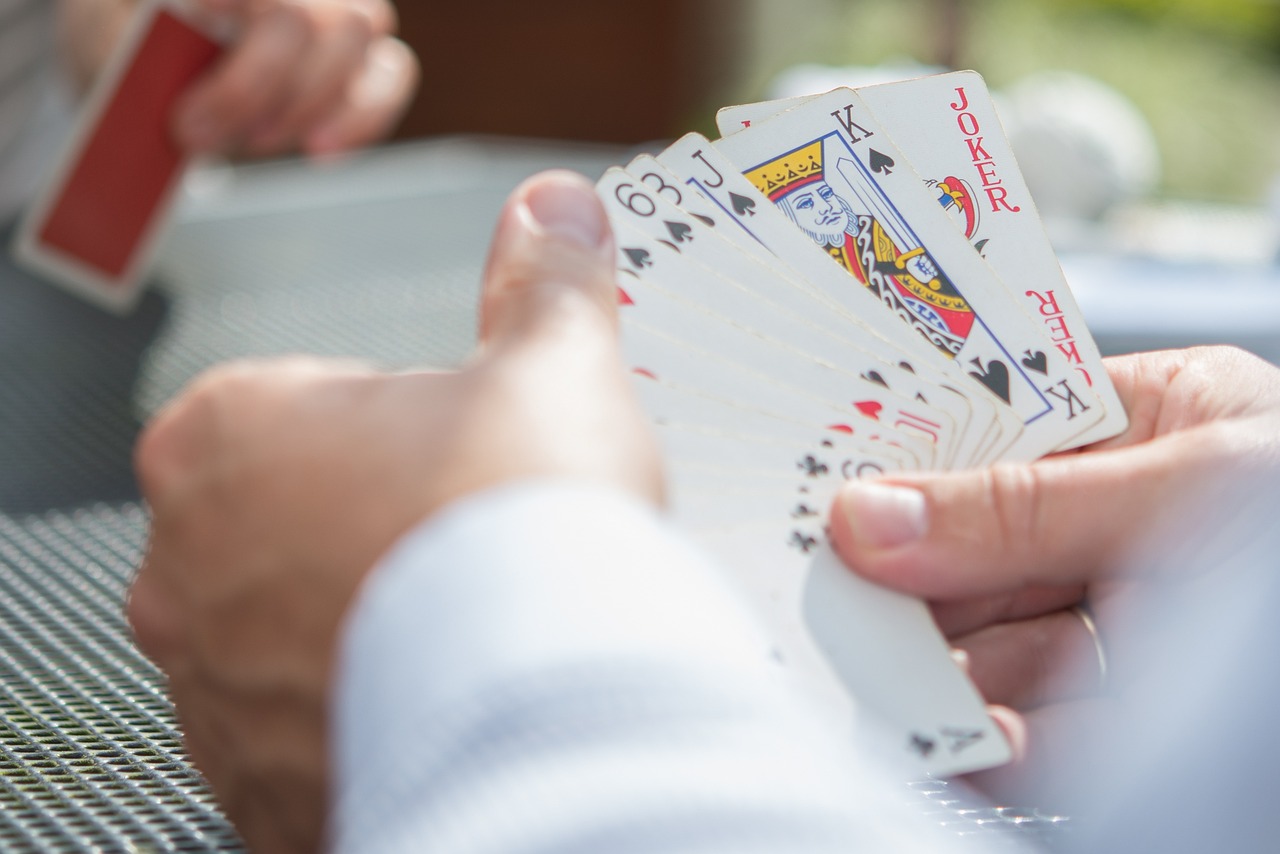Defending and attacking are two fundamental strategies in poker cash game settings. These dynamic strategies require players to adapt to the ever-changing dynamics of the game. Defending involves protecting one’s hand and chips by calling or raising bets, while attacking involves aggressively betting or raising to put pressure on opponents. Both strategies require a deep understanding of the game, the ability to read opponents, and the flexibility to adjust tactics based on the current situation. In this article, we will explore the importance of defending and attacking in poker cash games and how players can effectively employ these strategies to maximize their chances of success.
The Importance of Dynamic Poker Strategies in Cash Game Settings
One of the key reasons why dynamic strategies are so important in cash game settings is the ever-changing nature of the game. Unlike tournaments, where the blinds increase and the pressure mounts, cash games offer a more stable environment. However, this stability can be deceptive. As players come and go, the dynamics at the table shift, and new challenges arise.
Defending your chips is a fundamental aspect of any poker game, and cash games are no exception. When you’re defending, you’re essentially protecting your stack from being eroded by aggressive opponents. This requires a careful balance between playing strong hands and bluffing when necessary. By observing your opponents’ tendencies and adjusting your strategy accordingly, you can effectively defend your chips and maintain a solid foundation.
Attacking, on the other hand, involves taking calculated risks to accumulate chips and put pressure on your opponents. This can be done through aggressive betting, well-timed bluffs, and exploiting weaknesses in your opponents’ play. However, attacking should not be done recklessly. It requires a deep understanding of the game, a keen sense of timing, and the ability to read your opponents’ reactions.
The key to successful defending and attacking lies in adaptability. In cash game settings, the players around you are constantly changing, and so are their strategies. By being flexible and adjusting your own approach, you can stay one step ahead of your opponents. This means being willing to switch gears when necessary, from playing tight and conservative to becoming more aggressive and assertive.
Transitional phrase: Moreover, it’s important to remember that defending and attacking are not mutually exclusive strategies. In fact, they often go hand in hand. By defending your chips effectively, you create opportunities to attack. By attacking, you put pressure on your opponents and force them to defend. It’s a delicate dance, where each move influences the next.
To successfully implement dynamic strategies in cash game settings, it’s crucial to pay attention to the table dynamics. Transitional phrase: By observing how your opponents play, you can gain valuable insights into their strategies and adjust your own accordingly. Are they tight and conservative? Are they loose and aggressive? By understanding their tendencies, you can exploit their weaknesses and make informed decisions.
Another important aspect of dynamic strategies is the ability to adapt to changing circumstances. Transitional phrase: As the game progresses, the dynamics at the table can shift dramatically. Players may come and go, and new opponents with different playing styles may join. By staying alert and adjusting your strategy accordingly, you can stay ahead of the curve and maintain an edge.
In conclusion, dynamic strategies are essential for success in cash game settings. Whether you’re defending your chips or attacking your opponents, being able to adapt to changing circumstances is what separates the winners from the losers. By observing your opponents, adjusting your strategy, and staying flexible, you can navigate the ever-changing landscape of poker and come out on top. So the next time you sit down at a cash game table, remember the importance of being dynamic and embrace the challenge.
Adapting Your Poker Strategy: Defending Against Aggressive Players
The first key to defending against aggressive players is to understand their mindset. Aggressive players are often driven by a desire to control the table and intimidate their opponents. They thrive on the fear and uncertainty they create, forcing their opponents to make mistakes. By recognizing this, you can begin to develop a counter-strategy that takes advantage of their aggression.
One effective way to defend against aggressive players is to play a tight and selective game. This means being more cautious with your starting hands and only playing premium hands that have a higher chance of winning. By doing so, you can minimize your losses when facing aggressive players and increase your chances of winning big when you do have a strong hand.
Another strategy to consider is the use of check-raises. Aggressive players often bet and raise frequently, assuming that their opponents will fold under the pressure. By employing a check-raise, you can turn the tables on them and put them in a difficult position. This move involves checking when it is your turn to act, allowing the aggressive player to make a bet, and then raising their bet. This forces them to reconsider their aggressive approach and can lead to them making costly mistakes.
In addition to playing tight and using check-raises, it is important to pay attention to your opponents’ betting patterns. Aggressive players often have a predictable style of play, betting and raising with a wide range of hands. By observing their tendencies, you can gain valuable insights into their strategy and adjust your own accordingly. For example, if you notice that an aggressive player tends to bluff frequently, you can exploit this by calling their bets more often and waiting for them to make a mistake.
Lastly, it is crucial to maintain a calm and composed demeanor when facing aggressive players. They thrive on creating chaos and getting under their opponents’ skin. By staying focused and not letting their aggression affect your decision-making, you can maintain control of the game and make more informed choices. Remember, poker is a game of skill, and by staying true to your strategy and adapting to your opponents, you can overcome even the most aggressive players.
In conclusion, defending against aggressive players in a poker cash game setting requires a combination of skill, strategy, and adaptability. By understanding their mindset, playing tight, using check-raises, paying attention to their betting patterns, and maintaining composure, you can effectively defend against their aggression and increase your chances of success. Remember, poker is a dynamic game, and being able to adapt your strategy is key to staying ahead of the competition. So, the next time you find yourself facing an aggressive player, don’t be intimidated. Instead, use these strategies to turn the tables and come out on top.
Attacking Passive Opponents: Dynamic Strategies for Exploiting Weaknesses
Passive opponents are those who tend to play a more conservative style of poker. They are often hesitant to bet or raise, preferring to call and see more cards. While this style can be effective in certain situations, it can also be exploited by more aggressive players.
One strategy for attacking passive opponents is to increase the aggression in your own play. By betting and raising more frequently, you can put pressure on your opponents and force them to make difficult decisions. This can be particularly effective when you have a strong hand, as it can force your opponents to fold weaker hands or make costly mistakes.
Another strategy is to focus on position. In poker, position refers to where you are seated in relation to the dealer button. The later your position, the more information you have about your opponents’ actions before you have to make a decision. Against passive opponents, it can be advantageous to play more hands from late position, as you can take advantage of their reluctance to bet or raise.
Bluffing is another powerful tool when attacking passive opponents. Since they are more likely to call than to bet or raise, bluffing can be an effective way to win pots without having the best hand. However, it is important to choose your spots carefully and consider the likelihood that your opponent will fold. Bluffing too frequently can lead to being caught and losing chips.
One key aspect of attacking passive opponents is to pay attention to their tendencies and exploit their weaknesses. For example, if you notice that a particular opponent rarely bets or raises with weak hands, you can adjust your strategy accordingly. By betting or raising when they show weakness, you can often force them to fold and win the pot uncontested.
It is also important to be aware of your own image at the table. If you have been playing aggressively and attacking passive opponents, they may start to adjust their strategy and become more willing to bet or raise. In this case, it can be beneficial to mix up your play and occasionally slow down to keep your opponents off balance.
In conclusion, attacking passive opponents in poker cash game settings requires a dynamic and adaptable strategy. By increasing aggression, focusing on position, bluffing strategically, and exploiting weaknesses, you can put pressure on your opponents and win pots uncontested. However, it is important to pay attention to your opponents’ tendencies and adjust your strategy accordingly. With practice and experience, you can become a formidable opponent at the poker table.
Balancing Your Range: Adapting to Different Table Dynamics in Cash Games
When it comes to defending your range, it is crucial to understand the different types of opponents you may encounter at the table. Some players are tight and conservative, while others are loose and aggressive. By observing their playing style, you can gain valuable insights into their tendencies and adjust your own strategy accordingly.
Against tight opponents, it is important to loosen up your starting hand requirements. Since they are more selective with their hands, you can take advantage of this by playing a wider range of hands. However, it is essential to be cautious and not get too carried away, as tight players tend to have strong hands when they do decide to play.
On the other hand, when facing loose and aggressive opponents, it is crucial to tighten up your starting hand requirements. These players are more likely to bluff and make aggressive moves, so it is important to have a strong hand when you decide to engage with them. By playing fewer hands against loose opponents, you can minimize your risk and increase your chances of winning.
In addition to adjusting your starting hand requirements, it is also important to adapt your betting strategy based on the table dynamics. Against tight opponents, you can often get away with making smaller bets, as they are more likely to fold unless they have a strong hand. By making smaller bets, you can control the pot size and minimize your losses when you are up against a strong hand.
On the other hand, when facing loose and aggressive opponents, it is important to make larger bets to discourage them from making aggressive moves. By betting more, you can put pressure on them and force them to make difficult decisions. However, it is important to be mindful of your own hand strength and not overcommit to the pot if you are unsure of your chances of winning.
Another important aspect of balancing your range is understanding the concept of pot odds. Pot odds refer to the ratio of the current pot size to the cost of a contemplated call. By calculating the pot odds, you can determine whether it is profitable to make a call or fold. Against tight opponents, it is often more profitable to make calls with marginal hands, as they are less likely to bluff. However, against loose opponents, it is important to be more selective and only make calls when you have a strong hand or a good chance of improving your hand.
In conclusion, balancing your range is a crucial strategy for success in cash games. By adapting your starting hand requirements, betting strategy, and understanding pot odds, you can effectively defend against opponents’ attacks and launch your own offensive moves. Whether you are facing tight or loose opponents, being able to adapt to different table dynamics is key to becoming a successful poker player. So, the next time you sit down at a cash game table, remember to analyze the dynamics and adjust your strategy accordingly.
Maximizing Profit: Dynamic Strategies for Adjusting Bet Sizing in Poker Cash Games
In the world of poker, cash games are a popular format that requires players to adapt their strategies in order to maximize their profits. One key aspect of this adaptation is adjusting bet sizing, which can be a powerful tool for both defending and attacking opponents.
When it comes to defending, a player must carefully consider their bet sizing in order to protect their hand and minimize losses. This is particularly important when facing aggressive opponents who are likely to bet big. By using a smaller bet size, a player can effectively control the pot and limit their exposure to potential losses. This strategy is known as a defensive bet, and it allows players to stay in the game without risking too much of their stack.
On the other hand, attacking opponents requires a different approach to bet sizing. When a player has a strong hand, they want to extract as much value as possible from their opponents. In this case, a larger bet size can be used to put pressure on opponents and force them to make difficult decisions. By betting big, a player can potentially scare off weaker hands and increase the size of the pot, ultimately maximizing their potential profit.
However, it’s important to note that bet sizing is not a one-size-fits-all strategy. It requires careful observation and analysis of opponents’ playing styles and tendencies. By paying attention to how opponents react to different bet sizes, a player can gain valuable insights into their opponents’ hand strength and adjust their own bet sizing accordingly.
In addition to observing opponents, it’s also crucial to consider the overall dynamics of the table. The size of the blinds, the stack sizes of opponents, and the stage of the game all play a role in determining the optimal bet sizing. For example, in the early stages of a cash game when the blinds are small relative to the stack sizes, a smaller bet size may be more appropriate. This allows players to see more flops and potentially build a bigger pot later on.
As the game progresses and the blinds increase, however, a larger bet size may be necessary to maintain control of the pot. This is especially true when facing opponents with shorter stacks who are more likely to go all-in. By betting bigger, a player can put pressure on these opponents and potentially force them to fold, thus increasing their chances of winning the pot.
In conclusion, bet sizing is a dynamic strategy that can be used both defensively and offensively in poker cash games. By carefully considering opponents’ playing styles, table dynamics, and the stage of the game, players can adjust their bet sizing to maximize their profits. Whether it’s using a smaller bet size to defend against aggressive opponents or a larger bet size to attack weaker hands, the key is to adapt and make strategic decisions that give players the best chance of success. So, the next time you sit down at a poker cash game, remember the power of bet sizing and use it to your advantage.In conclusion, defending and attacking are dynamic strategies that players employ in poker cash game settings to adapt to different situations.
Defending involves playing a wider range of hands to protect against aggressive opponents, while attacking focuses on exploiting opponents’ weaknesses and maximizing profits. Both strategies require a deep understanding of the game, the ability to read opponents, and the flexibility to adjust tactics as the game evolves. Successful players in poker cash games must be skilled in both defending and attacking to effectively navigate the complexities of the game and achieve long-term profitability.




